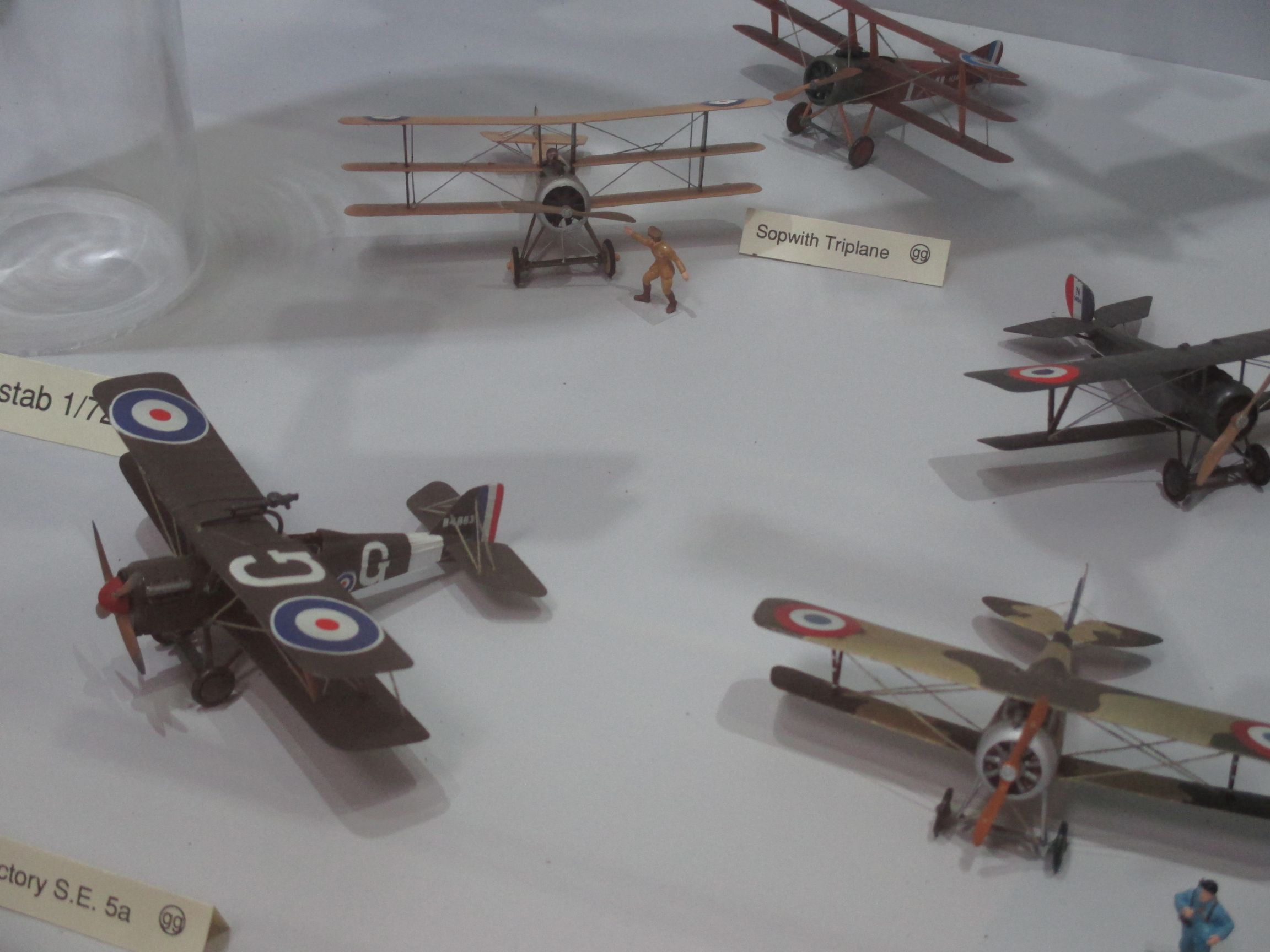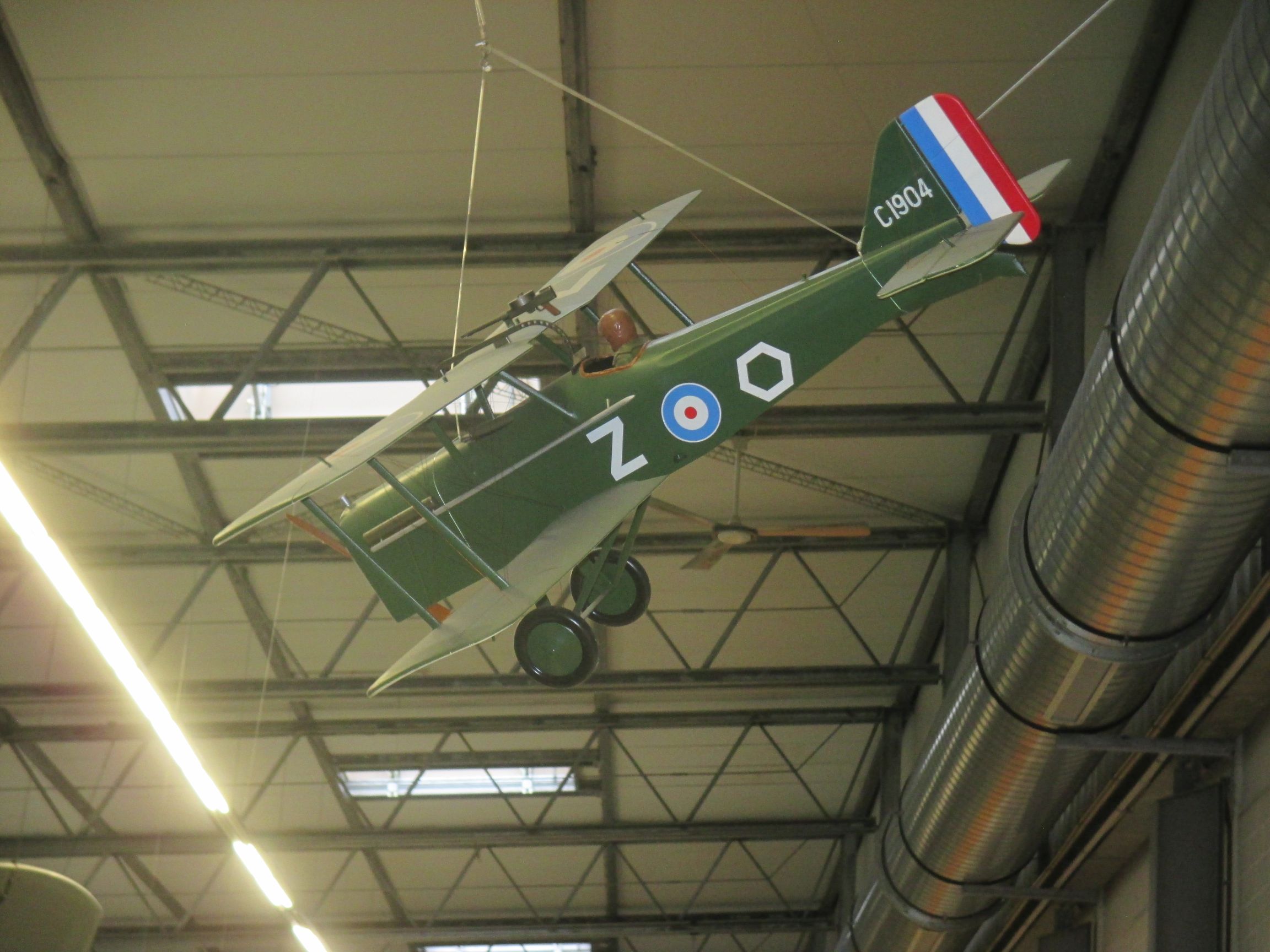Modell of the month Febrauary 2023 Factory
Britische Tugenden…die Royal Aircraft Factory S.E.5 a
From the original to the model
An independent part of the collections of the Aviation Museum Hannover-Laatzen are the more than 1,000 scale models, mainly of the international standards 1/72 and 1/48.
Such true-to-the-original miniatures enable viewers of museum technology history to gain an "overview", not only of the individual exhibit (sometimes even as the only possibility of a three-dimensional display if there is no longer a preserved original), but also of the developmental lines of aircraft construction by means of the possible arrangement and juxtaposition here; sometimes they even close gaps in the presentation of the originals. Their craftsmanship alone is a pleasure to behold.
In our series 'Model of the Month' today we present the Royal Aircraft Factory S.E.5 a, one of the big hits of early military aircraft construction and probably the technically most mature fighter of Great Britain in the First World War.

The model: James McCudden's S.E.5 a in 1/72.
The Aviation Museum is displaying two delicate models built by Günter Gelbke of Hannover and Herbert Schelp of Bielefeld in display case 5 of Hall 1; a large 1/8 scale model hangs diagonally opposite from the hall ceiling.
Both classic 1/72 scale display case specimens feature the aircraft of Captain James McCudden as leader of the 56th Squadron of the Royal Flying Corps and one of the most successful fighter pilots in WWI.
The Original: Second to none - the S.E.5 a
The first S.E.5 fighter biplanes arrived on the Western Front in early 1917. Already in early summer 1917 the more powerful second version appeared, recognizable by the suffix "a", and gave the pilots of the Royal Flying Corps a fighter that was at least equal to the best German designs until the end of the war. Characteristic of this single-seat fighter powered by a V8 in-line engine and armed with two 7.7 mm machine guns were the square-edged shapes of the wings and tail unit as well as the nose of the fuselage, due to the front-mounted cooler of the Hispano-Suiza or Wolseley Viper power unit.

The front fuselage was metal-planked, supporting and control surfaces as well as the rear fuselage were of fabric-covered wooden construction, the initially two-bladed, later four-bladed propeller was made of wood. With a length of 6.38 m and a wingspan of 8.12 m, the maximum 203 hp of the in-line engine brought the aircraft to a top speed of a solid 220 km/h with a take-off weight of up to 880 kg - making it one of the fastest aircraft in the First World War. It was also one of the first British fighters to be armed with two machine guns, one of which was mounted on the upper wing and could be aimed vertically to attack opponents from below.
Developed by a team at the Royal Aircraft Factory at Farnborough as the "Scout Experimental 5", testing was difficult: two prototypes crashed, killing the engineer and test pilot, Major F.W. Goodden. However, revision of the design produced an aircraft that was as powerful as it was good-natured, solid and well-armed, and which, thanks to this sum of desirable characteristics, had an excellent operational record in the last year of the war. The USA even planned to build this type under license, but this was cancelled at the end of the war.
With British understatement, James McCudden, a Victoria Cross recipient and killed by an accident with 57 kills in June 1918, characterized the type's merits: "Good to fly a machine that's fast enough - to run away when things get too hot.“

Total production of the S.E.5 amounted to 5,205 examples, of which 5,121 were S.E.5 a, some of which remained in service with the now new Royal Air Force well after the end of WWI.
Were we able to arouse your curiosity about our 40 or so originals and authentic replicas, about as many piston and jet engines and about 1,000 true-to-scale models, not to mention hundreds of original items of equipment, uniforms and pictures? Then come and visit us in Ulmer Straße opposite the Hannover exhibition center: we are looking forward to seeing you!
sb

